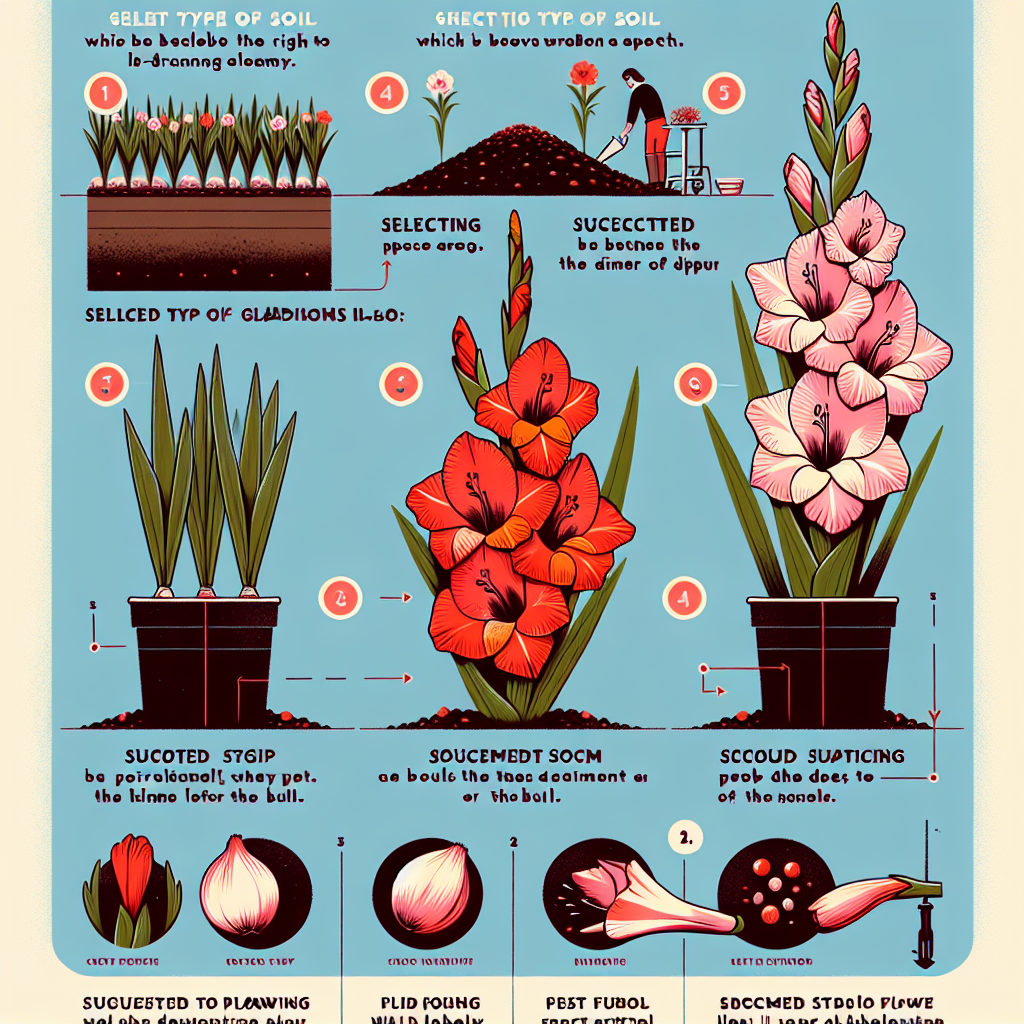
How to grow gladiolus
How to Grow Gladiolus: A Complete Guide
Gladiolus flowers are cherished for their stunning vertical spikes of blossoms that can light up any garden. These vibrant blooms come in a wide range of colors and sizes, making them a favorite among gardeners and floral enthusiasts alike. Whether you’re a seasoned gardener or a novice looking to add a touch of elegance to your outdoor space, knowing how to grow gladiolus is essential for ensuring a spectacular display. In this comprehensive guide, we will explore everything you need to know about planting, caring for, and enjoying gladiolus flowers.
Understanding Gladiolus
Gladiolus, commonly known as "sword lily," belongs to the family Iridaceae. These perennial flowers are native to Africa, with various species found around the globe. Gladiolus can grow up to 4 feet tall and produce stunning blooms that last several weeks. Their unique shape and vibrant colors make them perfect for bouquets and floral arrangements.
Choosing the Right Gladiolus Variety
Before you dive into how to grow gladiolus, it’s essential to choose the right variety that suits your garden’s climate and aesthetic preferences. Here are some popular types:
- G. hortulanus: The most popular variety with a range of colors.
- G. primulinus: Known for its open flowery spikes and striking hues.
- G. dalenii: Features broader leaves and vibrant blooms.
- G. byzantinus: A hardy, early-blooming variety.
Preparing to Plant Gladiolus
Assessing Your Planting Zone
Gladiolus thrives in USDA hardiness zones 7 to 10. If you live in a cooler climate, you can still enjoy these beautiful flowers by planting them in pots and bringing them indoors during harsh winters.
Gathering Your Supplies
To successfully plant gladiolus, gather the following supplies:
- Gladiolus corms (bulbs)
- Garden shovel
- Compost or well-rotted manure
- Fertilizer
- Mulch
- Watering can or hose
Choosing the Right Location
Gladiolus prefers full sun, so select a location that receives at least 6-8 hours of sunlight daily. Ensure the soil is well-drained, as gladiolus corms can rot in soggy conditions.
How to Grow Gladiolus: Planting Steps
Planting Time
The best time to plant gladiolus corms is in the spring, after the danger of frost has passed. If you live in a warmer climate, you can also plant them in the fall for an extended blooming period.
Preparing the Soil
Before planting, prepare the soil by loosening it to a depth of about 12 inches. Mix in compost or well-rotted manure to improve soil fertility and drainage. A soil pH of 6.0 to 7.0 is ideal for growing gladiolus.
Planting the Corms
Follow these steps to plant your gladiolus corms:
- Create rows about 6-8 inches apart.
- Digs holes about 3-6 inches deep.
- Place each corm (pointy side up) in the holes.
- Cover with soil and gently pat down.
- Water the area thoroughly after planting.
Caring for Gladiolus
Watering
After planting, water gladiolus corms thoroughly. Maintain consistent moisture throughout the growing season, but avoid overwatering, which can lead to rot. As a general rule, water once a week, and more frequently in hot weather.
Fertilizing
Start fertilizing your plants when they reach about 6 inches in height. Use a balanced fertilizer with an N-P-K ratio of approximately 10-10-10. Fertilizing every 4-6 weeks will encourage healthy growth and vibrant blooms.
Dealing with Pests and Diseases
Like any garden plant, gladiolus can attract pests and diseases. Here are some common issues and their solutions:
Pests
- Gladiolus Worms: Handpick them or use neem oil.
- Thrips: Apply insecticidal soap to control the population.
- Aphids: Spray with water or use insecticidal soap.
Diseases
- Fusarium Wilt: Rotate your crops and ensure good drainage.
- Botrytis Blight: Remove affected plant material and ensure airflow.
- Root Rot: Avoid overwatering and plant in well-drained soil.
Aftercare: Preparing for Blooms
Staking
As gladiolus grows, the tall flower spikes may require support. Use stakes or cages to keep the stems upright, particularly for taller varieties. This ensures your gladiolus remains robust and visually appealing.
Cutting for Bouquets
Gladiolus flowers make beautiful additions to any bouquet. To cut them for arrangements, select the bottom flower that is just beginning to open. This will ensure a longer vase life as the remaining buds open over time.
End of Season Care
Once blooming has concluded, it’s essential to prepare your gladiolus corms for the next growing season. Follow these steps:
- Allow the foliage to die back naturally after blooming.
- Cut the leaves to the ground once they have turned yellow.
- Gently lift the corms from the soil using a garden fork.
- Clean off the soil and let the corms dry in a cool, shaded area.
- Store the corms in a cool, dark place for the winter.
Conclusion
Growing gladiolus can be a rewarding experience that adds stunning beauty to your garden. By learning how to grow gladiolus effectively through proper planting, care, and maintenance, you can enjoy these magnificent blooms year after year. With the right conditions and care techniques, your garden will become a vibrant showcase of color and grace, impressing both friends and family alike.
"Gardening is not just about growing flowers; it's about creating beauty and joy in your life." - Unknown
Now that you have all the information you need, it’s time to get started. Happy gardening!
By Guest, Published on September 17th, 2024